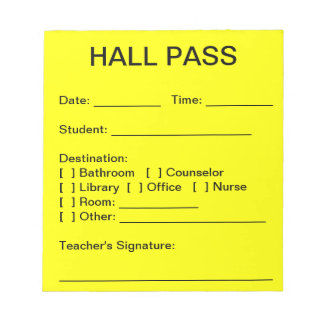Saturday, May 30, 2020
The Executive Suite: 15% Off School Hall Pass Pads
The Executive Suite: 15% Off School Hall Pass Pads: A great way to keep an eye on student movements outside the classroom and improve school safety. Our hall passes have room for the date, st...
The Executive Suite: How to improve interactions with special needs pat...
The Executive Suite: How to improve interactions with special needs pat...: At the age of five, my brother, Guy, ran into the street and was hit by a truck while flying a kite. He suffered a traumatic brain injury an...
The Executive Suite: 15% Off All Business Cards
The Executive Suite: 15% Off All Business Cards: 15% Off All Business Cards VIEW ALL CARDS Linen Business Card w/Logo $60.05 Photo Business Cards (Pearl Fi...
The Executive Suite: 15% Off Medical Practice Supplies
The Executive Suite: 15% Off Medical Practice Supplies: 15% Off Medical Practice Supplies VIEW ALL Manual Prescription Pad (Large - Yellow) Manual Prescription Pad (Large - ...
Friday, May 29, 2020
The Executive Suite: 10% Off Medical Practice Supplies
The Executive Suite: 10% Off Medical Practice Supplies: 10% Off Medical Practice Supplies VIEW ALL Manual Prescription Pad (Large - Yellow) Manual Prescription Pad (Large - ...
The Executive Suite: 10% Off All Business Cards
The Executive Suite: 10% Off All Business Cards: 10% Off All Business Cards VIEW ALL CARDS Linen Business Card w/Logo $60.05 Photo Business Cards (Pearl Fi...
The Executive Suite: 10% Off School Hall Passes
The Executive Suite: 10% Off School Hall Passes: A great way to keep an eye on student movements outside the classroom and improve school safety. Our hall passes have room for the date, st...
Thursday, May 28, 2020
10% Off School Hall Passes
The Executive Suite: 10% Off All Business Cards
The Executive Suite: 10% Off All Business Cards: 10% Off All Business Cards VIEW ALL CARDS Linen Business Card w/Logo $60.05 Photo Business Cards (Pearl Fi...
10% Off Medical Practice Supplies
10% Off Medical Practice Supplies
VIEW ALL
 Manual Prescription Pad (Large - Yellow)
Manual Prescription Pad (Large - Yellow) Manual Prescription Pad (Large - Pink)
Manual Prescription Pad (Large - Pink) Manual Prescription Pads (Bright Orange)
Manual Prescription Pads (Bright Orange) Manual Prescription Pads (Light Pink)
Manual Prescription Pads (Light Pink) Manual Prescription Pads (Light Yellow)
Manual Prescription Pads (Light Yellow) Manual Prescription Pad (Large - Blue)
Manual Prescription Pad (Large - Blue)
__________________________________________________
Appointment Reminder Cards
$44.05
15% Off
$56.30
15% Off
$44.05
15% Off
$44.05
15% Off
$56.30
15% Off
VIEW ALL PRODUCTS
Why the next 100 days threaten physicians’ assets
As America returns to work after both Memorial Day Weekend and coronavirus quarantines, predictable seasonal risks put physicians’ assets at risk.
Memorial Day starts the period known as the “100 Deadliest Days”, a period of significantly increased liability for a variety of injuries and accidents, including fatal car accidents, that runs through Labor Day. While not all of these accidents can be attributed to children many of them are, and car accidents are the leading cause of death among teens, with those age 16-19 being most at risk. In addition to the obvious horrific tragedy of losing a child or causing the death or grave injury of a passenger or another driver, you face financial liability for your children that could be life changing for an entire family.
During the summer teen drivers are out of school, have significant free time, and spend more unsupervised time behind the wheel on non-essential, discretionary travel. The vast majority of these teens are driving vehicles owned and insured by their parents, who have significant liability for the actions of their children. I’m concerned that this usual risk has been significantly increased by COVID19 lockdown conditions that have left many teens (including your adult children that may be home for the summer, or longer, from college etc.) bored, restless, and feeling socially deprived of the company of their peers. This rush to “make up for lost time” is being accompanied national surge in speeding tickets. Increased speed is being accompanied by a loss of driving skill due to being out of practice, a bad combination.
1. Know all the risks and control predictably dangerous driving behavior. There are four primary driving behaviors and fact patterns that lead to accidents, serious injuries, and fatalities with teen drivers; speeding, failure to wear a seat belt, distracted driving (including distractions caused by passengers and smart phones, distractions are involved in 2 out of three cases), and nighttime driving. Educate your children about these risks and take steps to control their behavior. If you can’t make them confirm, take the keys.
While automobile accidents are the biggest part of this seasonal risk, they certainly aren’t your only source of parental liability. Some other common recurring risks to be aware of include:
2. Don’t draw personal liability into your business. I have repeatedly advised readers to avoid leasing or purchasing their (and their family members’) personal use vehicles in the name of their medical practice or other active business in order to obtain a tax deduction. While your CPA is correct about the tax advantage of doing so, that amount of savings is not worth dragging a potential seven figure liability for a serious accident into your primary revenue producing business. If you are doing so, consider holding title personally instead and discuss taking a car allowance instead with your CPA.
3. Be heavily insured and know the details, not all policies are the same. Insurance is your most cost effective and predictable line of defense. Automobile insurance with both a high limit personal liability umbrella of at least $2MM and at least mid-six figures in un-insured (UIM) an underinsured motorist (UM) coverage is vital. Do not assume that you have adequate UIM and UM coverage just because you purchased an umbrella, the limits are often separate and significantly lower and those most at risk from the actions of your children may need to reply upon this coverage, or your life savings, if you don’t have it. If your adult children are using vehicles you own, consider transferring title to them and getting them separately insured to distance yourself from their liability.
4. Actively protect yourself beyond the limits of your insurance policy. While heavy insurance coverage is a key part of every physician’s asset protection plan, you cannot rely on insurance alone to be a magic bullet that protects you and your wealth against a universe of infinite risk. Gaps in coverage include exclusions, policy limits and reductions in coverage for intentional acts, driving while impaired and not wearing a seatbelt, as just a few common examples.
 Manual Prescription Pad (Large - Yellow)
Manual Prescription Pad (Large - Yellow)
 Manual Prescription Pad (Large - Pink)
Manual Prescription Pad (Large - Pink)
 Manual Prescription Pads (Bright Orange)
Manual Prescription Pads (Bright Orange)
 Manual Prescription Pads (Light Pink)
Manual Prescription Pads (Light Pink)
 Manual Prescription Pads (Light Yellow)
Manual Prescription Pads (Light Yellow)
 Manual Prescription Pad (Large - Blue)
Manual Prescription Pad (Large - Blue)
This Week Raises Your Personal Liability
Memorial Day starts the period known as the “100 Deadliest Days”, a period of significantly increased liability for a variety of injuries and accidents, including fatal car accidents, that runs through Labor Day. While not all of these accidents can be attributed to children many of them are, and car accidents are the leading cause of death among teens, with those age 16-19 being most at risk. In addition to the obvious horrific tragedy of losing a child or causing the death or grave injury of a passenger or another driver, you face financial liability for your children that could be life changing for an entire family.
During the summer teen drivers are out of school, have significant free time, and spend more unsupervised time behind the wheel on non-essential, discretionary travel. The vast majority of these teens are driving vehicles owned and insured by their parents, who have significant liability for the actions of their children. I’m concerned that this usual risk has been significantly increased by COVID19 lockdown conditions that have left many teens (including your adult children that may be home for the summer, or longer, from college etc.) bored, restless, and feeling socially deprived of the company of their peers. This rush to “make up for lost time” is being accompanied national surge in speeding tickets. Increased speed is being accompanied by a loss of driving skill due to being out of practice, a bad combination.
Risk Management Essentials
1. Know all the risks and control predictably dangerous driving behavior. There are four primary driving behaviors and fact patterns that lead to accidents, serious injuries, and fatalities with teen drivers; speeding, failure to wear a seat belt, distracted driving (including distractions caused by passengers and smart phones, distractions are involved in 2 out of three cases), and nighttime driving. Educate your children about these risks and take steps to control their behavior. If you can’t make them confirm, take the keys.
While automobile accidents are the biggest part of this seasonal risk, they certainly aren’t your only source of parental liability. Some other common recurring risks to be aware of include:
- Social media liability, including cyberbullying, stalking, hacking, and sexting
- Injuries incurred at your home, vacation homes, or incurred with your recreational vehicles, boats. etc.
- Issues of consent for sexually active teens
- Access to potentially dangerous items in your home including alcohol, prescription drugs, and firearms
2. Don’t draw personal liability into your business. I have repeatedly advised readers to avoid leasing or purchasing their (and their family members’) personal use vehicles in the name of their medical practice or other active business in order to obtain a tax deduction. While your CPA is correct about the tax advantage of doing so, that amount of savings is not worth dragging a potential seven figure liability for a serious accident into your primary revenue producing business. If you are doing so, consider holding title personally instead and discuss taking a car allowance instead with your CPA.
3. Be heavily insured and know the details, not all policies are the same. Insurance is your most cost effective and predictable line of defense. Automobile insurance with both a high limit personal liability umbrella of at least $2MM and at least mid-six figures in un-insured (UIM) an underinsured motorist (UM) coverage is vital. Do not assume that you have adequate UIM and UM coverage just because you purchased an umbrella, the limits are often separate and significantly lower and those most at risk from the actions of your children may need to reply upon this coverage, or your life savings, if you don’t have it. If your adult children are using vehicles you own, consider transferring title to them and getting them separately insured to distance yourself from their liability.
4. Actively protect yourself beyond the limits of your insurance policy. While heavy insurance coverage is a key part of every physician’s asset protection plan, you cannot rely on insurance alone to be a magic bullet that protects you and your wealth against a universe of infinite risk. Gaps in coverage include exclusions, policy limits and reductions in coverage for intentional acts, driving while impaired and not wearing a seatbelt, as just a few common examples.
10% Off Medical Practice Supplies
VIEW ALL
 Manual Prescription Pad (Large - Yellow)
Manual Prescription Pad (Large - Yellow) Manual Prescription Pad (Large - Pink)
Manual Prescription Pad (Large - Pink) Manual Prescription Pads (Bright Orange)
Manual Prescription Pads (Bright Orange) Manual Prescription Pads (Light Pink)
Manual Prescription Pads (Light Pink) Manual Prescription Pads (Light Yellow)
Manual Prescription Pads (Light Yellow) Manual Prescription Pad (Large - Blue)
Manual Prescription Pad (Large - Blue)
__________________________________________________
Appointment Reminder Cards
$44.05
15% Off
$56.30
15% Off
$44.05
15% Off
$44.05
15% Off
$56.30
15% Off
VIEW ALL PRODUCTS
Four myths of succession planning for physician practices
While busy physician owners have many competing time pressures, succession planning is one of the most effective ways to give you peace of mind and ensure you are prepared for any unforeseen event or for retirement. When successful physician practice owners reach a certain age, it becomes imperative that they address the issue of succession planning. Many of them may have been dodging this particular conversation for years, yet they sometimes approach me with seemingly ironclad convictions about how they would like the succession to play out. That doesn’t mean that they actually know what they want. The physician owners may have met with their accountant or a financial advisor to learn about avoidance of future or current tax liabilities related to ownership changes.
To be honest, physician owners often contact me fully devoted to a set of myths, beliefs, and emotions that are almost always counterproductive in the early stages of the process. The first step by any qualified consultant should not be a discussion of strategies or tools. It should be a frank discussion of what the physician client really wants. That discussion requires breaking down some myths that are almost universal amongst physician practice owners and confronting not only the realities of succession planning, but also the emotions and physician dynamics that are powerful forces in many medical practices.
In physician practice succession planning, time is either your ally or your enemy. You can spend time planning for succession during your active business lifetime, or postpone planning and wait until the more chaotic, uncertain, and expensive succession planning occurs post-mortem, when the choice is no longer yours.
Reluctance to accept the realities of time can have disastrous consequences, especially since timing issues are often beyond an owner’s control. Just as the aging CEOs of major corporations are pressed by shareholders who demand a succession plan to protect their investments, so too a physician owner should implement a succession plan to protect the interests of all stakeholders. The lesson? Start early. Select your successor(s), and work with an experienced consultant to develop a succession plan before it’s an issue.
Really? To whom? When? For how much? Finding a willing buyer for any medical practice is rarely just a matter of hanging up a “for sale” sign. Buyers are not necessarily prepared to wait until the time is right in a business’s life cycle before making an offer. And it is even more difficult for solo physician practices.
The same issues of timing influence the way medical practices will be valued. Some physician owners have an idea of the worth of their practice based on revenues, fixed assets, profitability and a variety of balance sheet items. If you are not one of those, then a valuation of the practice may be needed at some point.
What the physician owners want is fair value paid by the buyer, as if that was a constant or objective number. Fair market value (as defined by the United States Board of Tax Appeals) is “The price at which property would change hands between a willing buyer and a willing seller, neither being under any compulsion to buy or sell, and both having reasonable knowledge of the relevant facts.” The truth is that valuing a medical practice is a detailed process (as I have written about several times in the past) and when the time comes for a valuation, you should will need an independent valuation of the practice, documentation of the business valuation data and methodology and perhaps periodic review of the valuation.
It is not surprising how many physician practice owners approach me wanting a succession plan without a successor clearly established. “Established” means more than simply identifying a successor. It’s also preparing that successor, which may require a long apprenticeship. The apprenticeship will certainly involve learning all the operational tasks required in the business, but it may require much more from both the successor and the current practice owner.
Growth is the lifeblood of any business. In most medical practices, growth comes not only as a result of outstanding clinical performance, but also the careful management and expansion of relationships with patients and referring physicians. A successful succession plan builds into the apprenticeship not only the mastery of business tasks but, equally as important, the building of business relationships. The outstanding taskmaster does not always turn out to be the best rainmaker, and that’s an important thing to learn when identifying a successor.
The physician owner may also have handpicked a successor that has very different ideas as to how the practice should eventually be run. Now the owner has to listen to new ideas about a successful practice he or she has built. It’s not easy. That’s why a consultant should stress a long apprenticeship as part of the succession plan.
Too many physician owners see a succession plan as “all or nothing”—that changing ownership necessarily means giving up control and reducing income. However, it is entirely possible to create a succession plan that transfers business ownership to an eventual successor without losing control or income or—as is vitally important to many founders —the continued opportunity to build a legacy.
It is possible for a physician owner to still run a medical practice and be paid for that role without the loss of title or any of the other satisfactions of operating an independent physician practice. However, the earlier a physician owner begins transferring ownership to a successor, the likelier it is for a succession plan to be a success, both emotionally and financially.
Think of a succession plan as a living document that records exactly how you want the next chapter of your business story to unfold – a tool designed to ensure your practice continues to thrive for many years following your departure. Know that once you’ve made the succession plan, it can change. New circumstances, unforeseen needs, or a new vision can all inspire changes to your finished plan. The good news is you can change course and make corrections as you go, especially if you see any vital errors. But you must also trust in the training process and in your successor’s decisions.
So relax. You have to give up the reins sometime. Let go of the responsibilities of leadership, and look toward your future. Decide what legacy you want to leave behind, both professionally and personally, and greet it with promise and hope by making a rock-solid succession plan. it is helpful to work toward deadlines for completing your succession plan. Allow yourself a generous amount of time to seek advice and carefully weigh the right decisions.
People often say change is inevitable, but it is possible to cultivate a change for the better by planning in advance for your medical practice succession.
 Manual Prescription Pad (Large - Yellow)
Manual Prescription Pad (Large - Yellow)
 Manual Prescription Pad (Large - Pink)
Manual Prescription Pad (Large - Pink)
 Manual Prescription Pads (Bright Orange)
Manual Prescription Pads (Bright Orange)
 Manual Prescription Pads (Light Pink)
Manual Prescription Pads (Light Pink)
 Manual Prescription Pads (Light Yellow)
Manual Prescription Pads (Light Yellow)
 Manual Prescription Pad (Large - Blue)
Manual Prescription Pad (Large - Blue)
To be honest, physician owners often contact me fully devoted to a set of myths, beliefs, and emotions that are almost always counterproductive in the early stages of the process. The first step by any qualified consultant should not be a discussion of strategies or tools. It should be a frank discussion of what the physician client really wants. That discussion requires breaking down some myths that are almost universal amongst physician practice owners and confronting not only the realities of succession planning, but also the emotions and physician dynamics that are powerful forces in many medical practices.
Myth One: There’s Plenty of Time
In physician practice succession planning, time is either your ally or your enemy. You can spend time planning for succession during your active business lifetime, or postpone planning and wait until the more chaotic, uncertain, and expensive succession planning occurs post-mortem, when the choice is no longer yours.
Reluctance to accept the realities of time can have disastrous consequences, especially since timing issues are often beyond an owner’s control. Just as the aging CEOs of major corporations are pressed by shareholders who demand a succession plan to protect their investments, so too a physician owner should implement a succession plan to protect the interests of all stakeholders. The lesson? Start early. Select your successor(s), and work with an experienced consultant to develop a succession plan before it’s an issue.
Myth Two: It’s Easier to Just Sell It
Really? To whom? When? For how much? Finding a willing buyer for any medical practice is rarely just a matter of hanging up a “for sale” sign. Buyers are not necessarily prepared to wait until the time is right in a business’s life cycle before making an offer. And it is even more difficult for solo physician practices.
The same issues of timing influence the way medical practices will be valued. Some physician owners have an idea of the worth of their practice based on revenues, fixed assets, profitability and a variety of balance sheet items. If you are not one of those, then a valuation of the practice may be needed at some point.
What the physician owners want is fair value paid by the buyer, as if that was a constant or objective number. Fair market value (as defined by the United States Board of Tax Appeals) is “The price at which property would change hands between a willing buyer and a willing seller, neither being under any compulsion to buy or sell, and both having reasonable knowledge of the relevant facts.” The truth is that valuing a medical practice is a detailed process (as I have written about several times in the past) and when the time comes for a valuation, you should will need an independent valuation of the practice, documentation of the business valuation data and methodology and perhaps periodic review of the valuation.
Myth Three: A Successor Will Be Ready When I’m Ready
It is not surprising how many physician practice owners approach me wanting a succession plan without a successor clearly established. “Established” means more than simply identifying a successor. It’s also preparing that successor, which may require a long apprenticeship. The apprenticeship will certainly involve learning all the operational tasks required in the business, but it may require much more from both the successor and the current practice owner.
Growth is the lifeblood of any business. In most medical practices, growth comes not only as a result of outstanding clinical performance, but also the careful management and expansion of relationships with patients and referring physicians. A successful succession plan builds into the apprenticeship not only the mastery of business tasks but, equally as important, the building of business relationships. The outstanding taskmaster does not always turn out to be the best rainmaker, and that’s an important thing to learn when identifying a successor.
The physician owner may also have handpicked a successor that has very different ideas as to how the practice should eventually be run. Now the owner has to listen to new ideas about a successful practice he or she has built. It’s not easy. That’s why a consultant should stress a long apprenticeship as part of the succession plan.
Myth Four: Giving Up Ownership Means Losing Control and Income
Too many physician owners see a succession plan as “all or nothing”—that changing ownership necessarily means giving up control and reducing income. However, it is entirely possible to create a succession plan that transfers business ownership to an eventual successor without losing control or income or—as is vitally important to many founders —the continued opportunity to build a legacy.
It is possible for a physician owner to still run a medical practice and be paid for that role without the loss of title or any of the other satisfactions of operating an independent physician practice. However, the earlier a physician owner begins transferring ownership to a successor, the likelier it is for a succession plan to be a success, both emotionally and financially.
Final Thoughts
Think of a succession plan as a living document that records exactly how you want the next chapter of your business story to unfold – a tool designed to ensure your practice continues to thrive for many years following your departure. Know that once you’ve made the succession plan, it can change. New circumstances, unforeseen needs, or a new vision can all inspire changes to your finished plan. The good news is you can change course and make corrections as you go, especially if you see any vital errors. But you must also trust in the training process and in your successor’s decisions.
So relax. You have to give up the reins sometime. Let go of the responsibilities of leadership, and look toward your future. Decide what legacy you want to leave behind, both professionally and personally, and greet it with promise and hope by making a rock-solid succession plan. it is helpful to work toward deadlines for completing your succession plan. Allow yourself a generous amount of time to seek advice and carefully weigh the right decisions.
People often say change is inevitable, but it is possible to cultivate a change for the better by planning in advance for your medical practice succession.
10% Off Medical Practice Supplies
VIEW ALL
 Manual Prescription Pad (Large - Yellow)
Manual Prescription Pad (Large - Yellow) Manual Prescription Pad (Large - Pink)
Manual Prescription Pad (Large - Pink) Manual Prescription Pads (Bright Orange)
Manual Prescription Pads (Bright Orange) Manual Prescription Pads (Light Pink)
Manual Prescription Pads (Light Pink) Manual Prescription Pads (Light Yellow)
Manual Prescription Pads (Light Yellow) Manual Prescription Pad (Large - Blue)
Manual Prescription Pad (Large - Blue)
__________________________________________________
Appointment Reminder Cards
$44.05
15% Off
$56.30
15% Off
$44.05
15% Off
$44.05
15% Off
$56.30
15% Off
VIEW ALL PRODUCTS
Subscribe to:
Posts (Atom)



















